Full text
PDF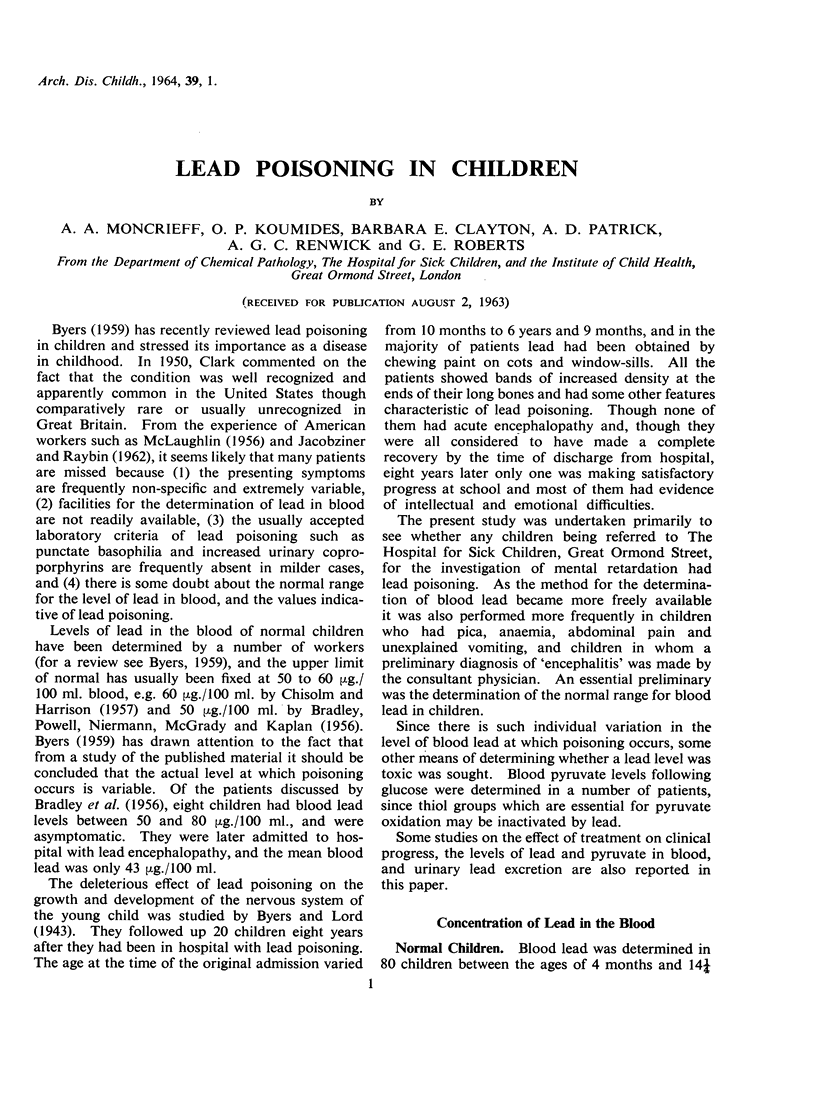
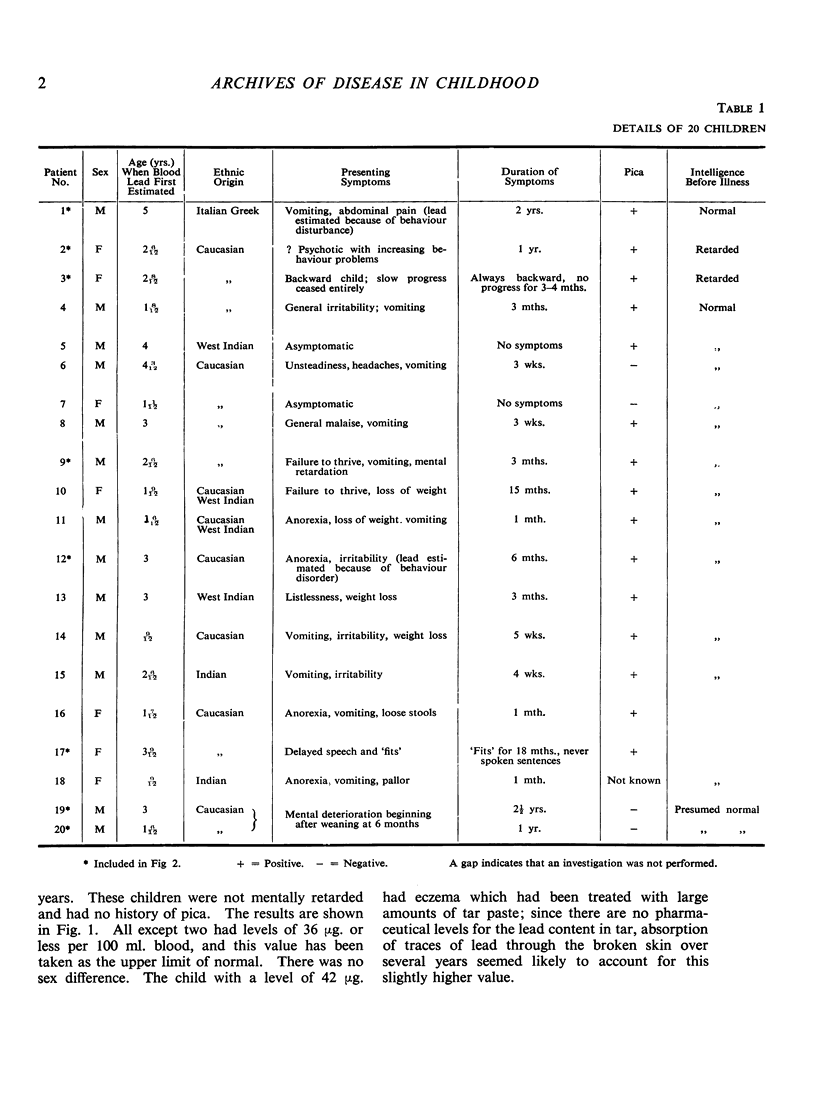


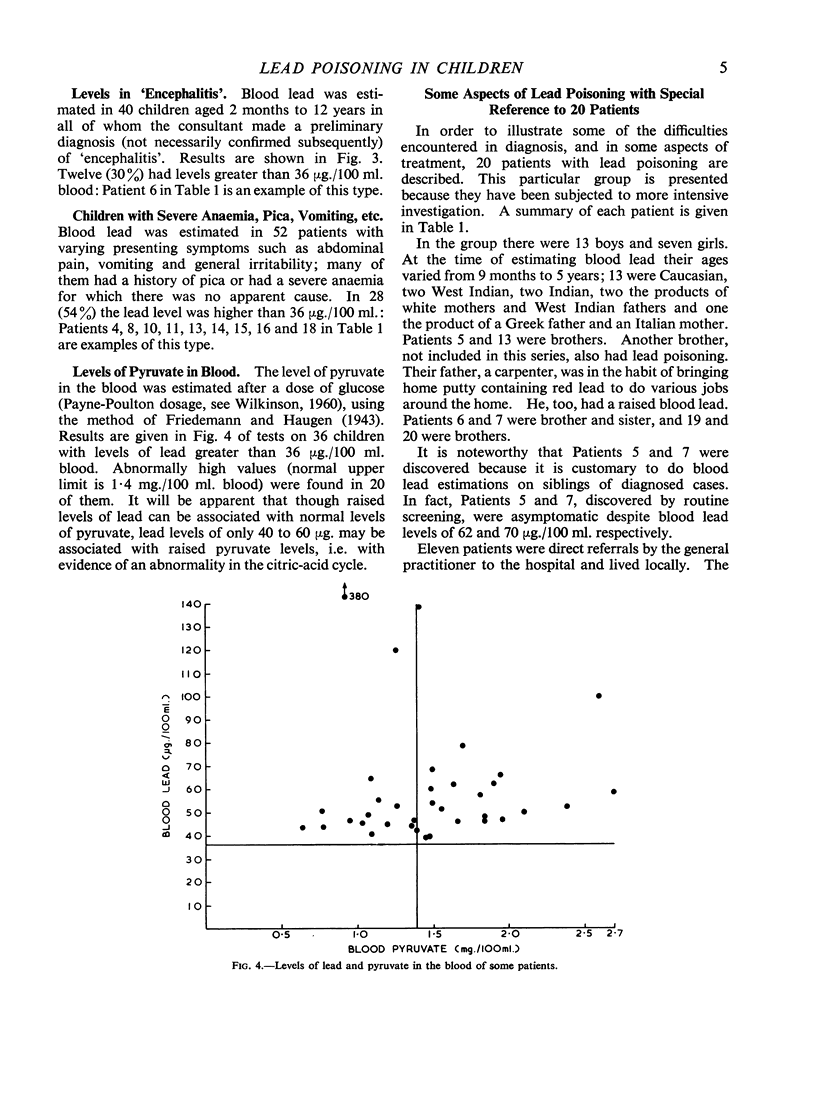
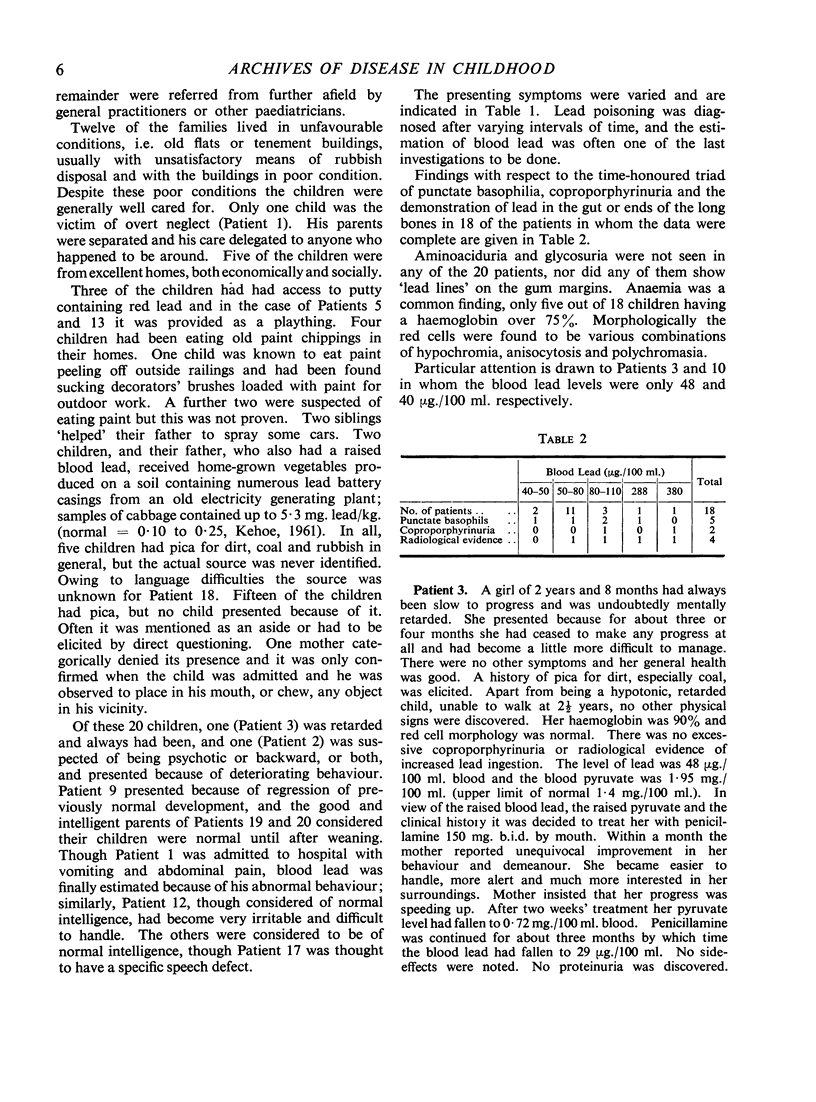

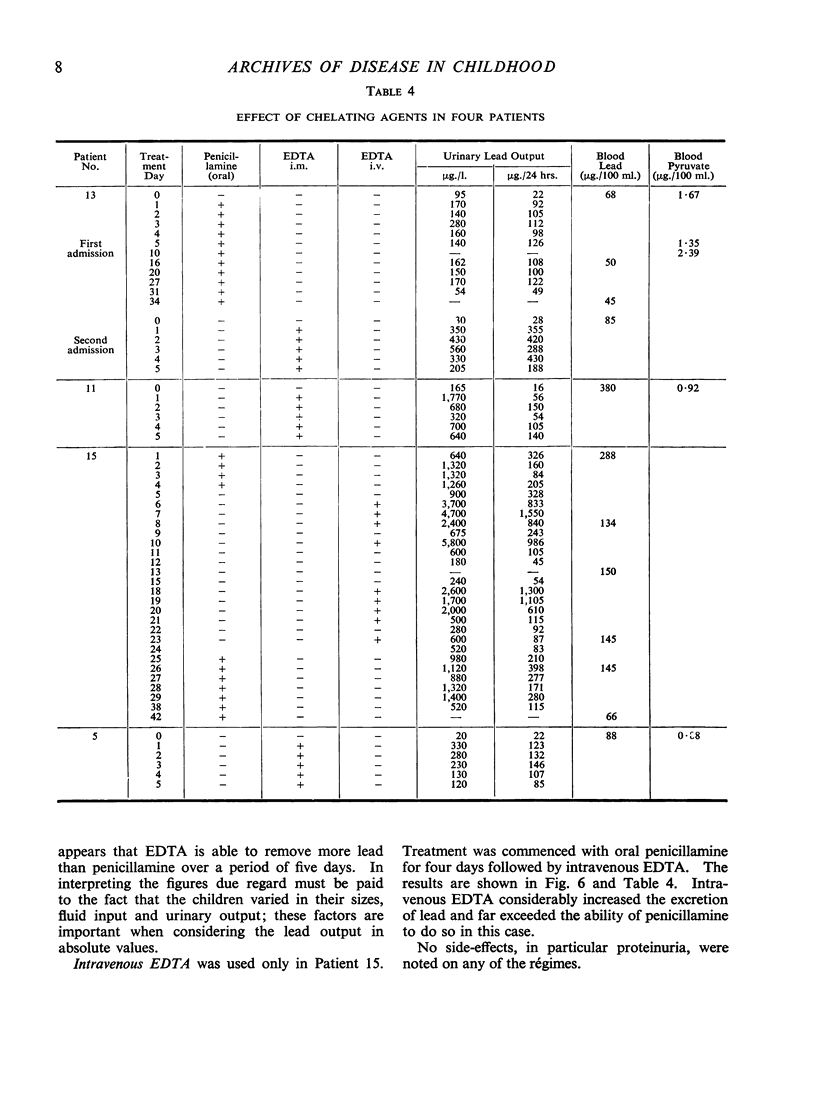
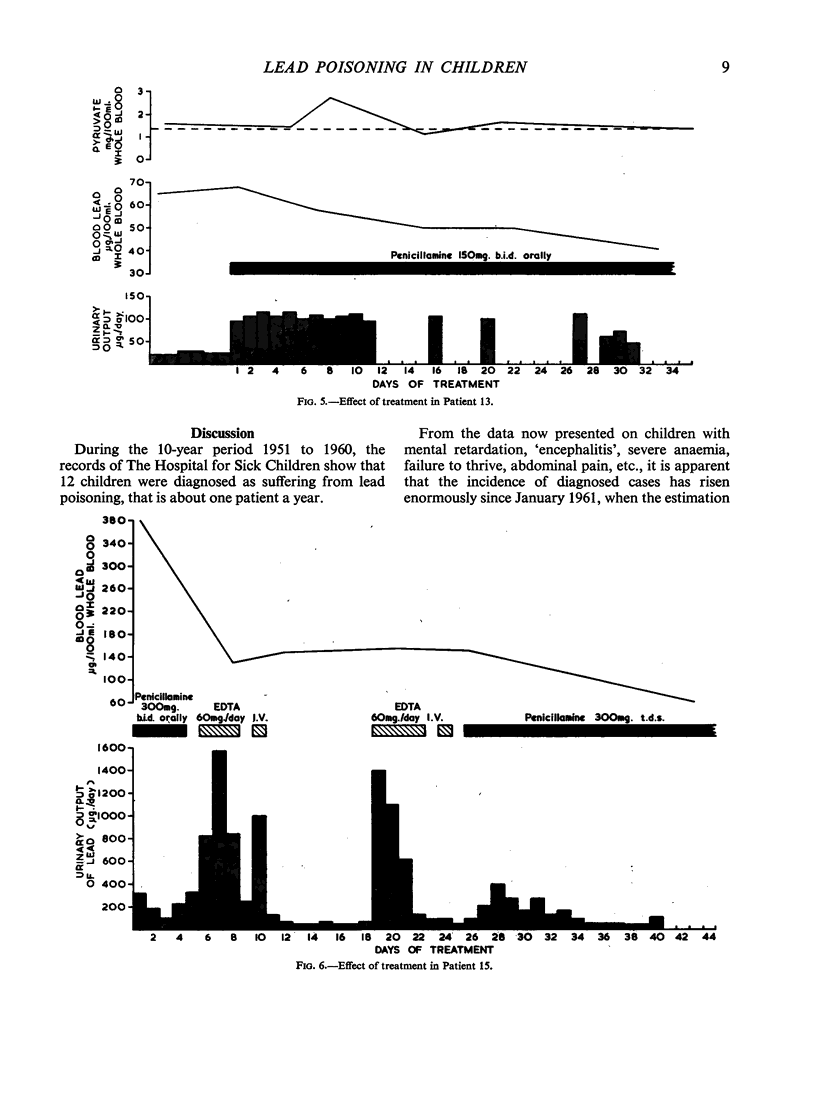
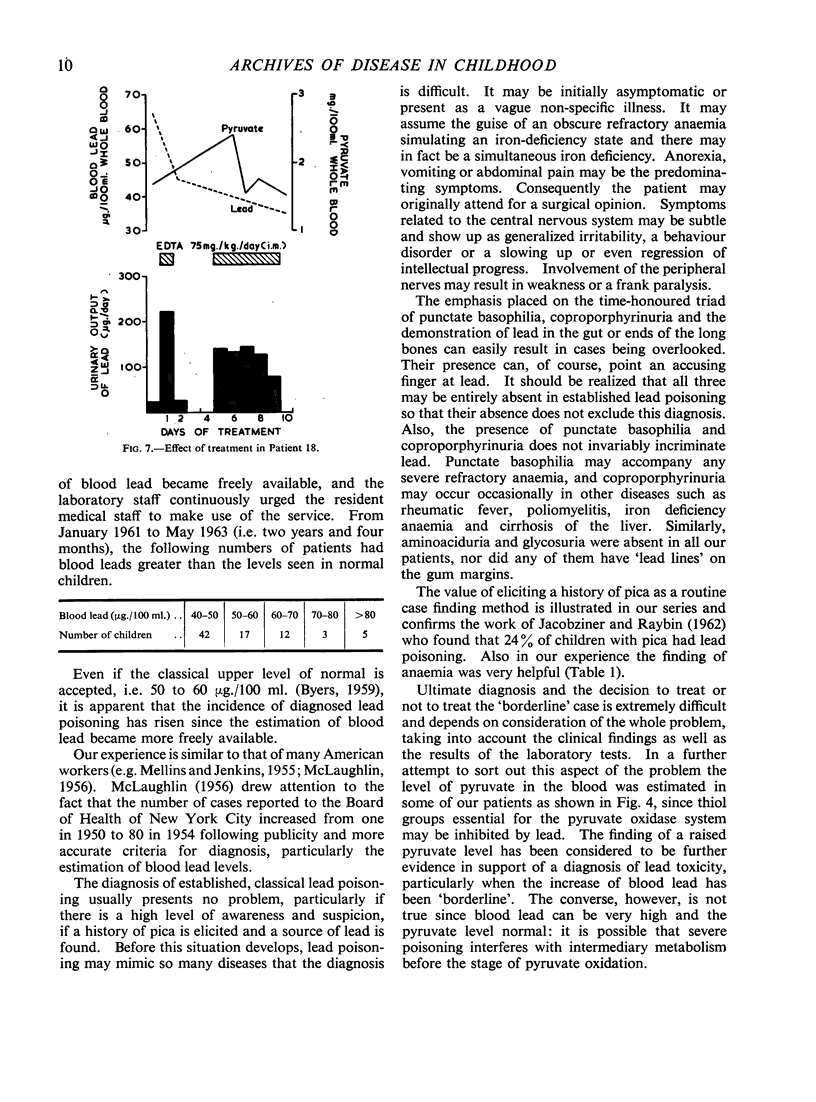

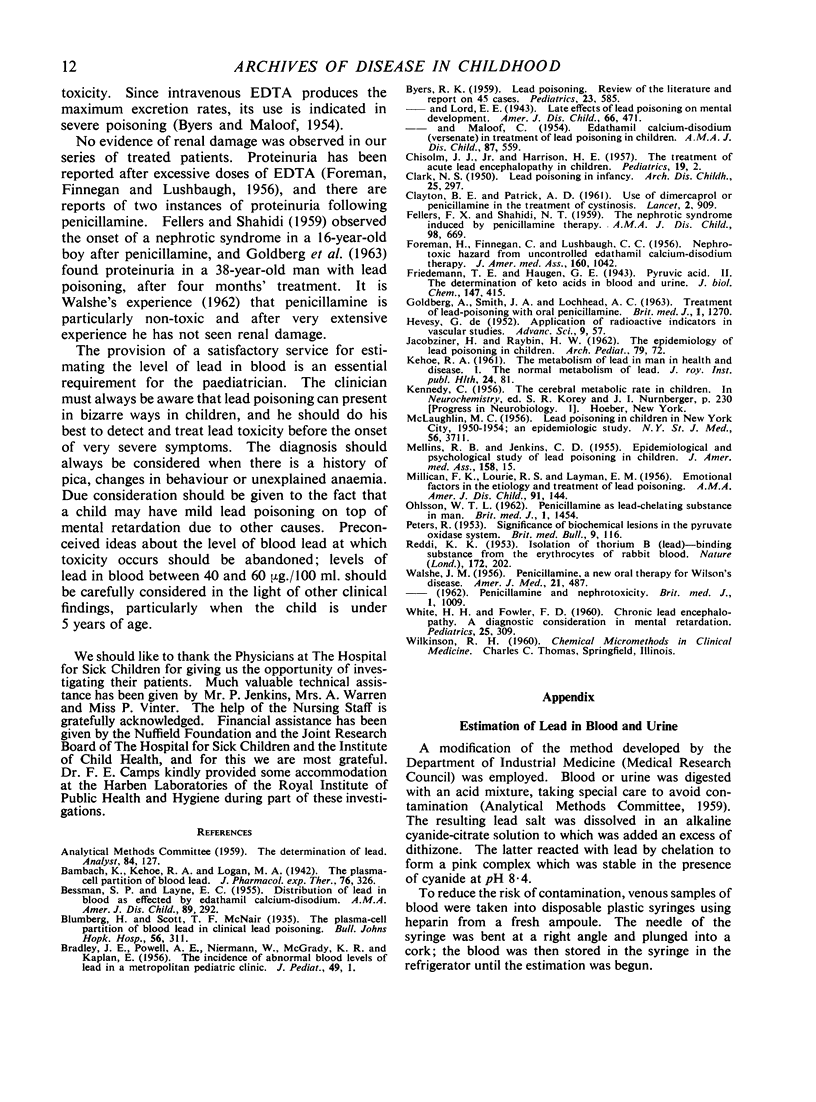
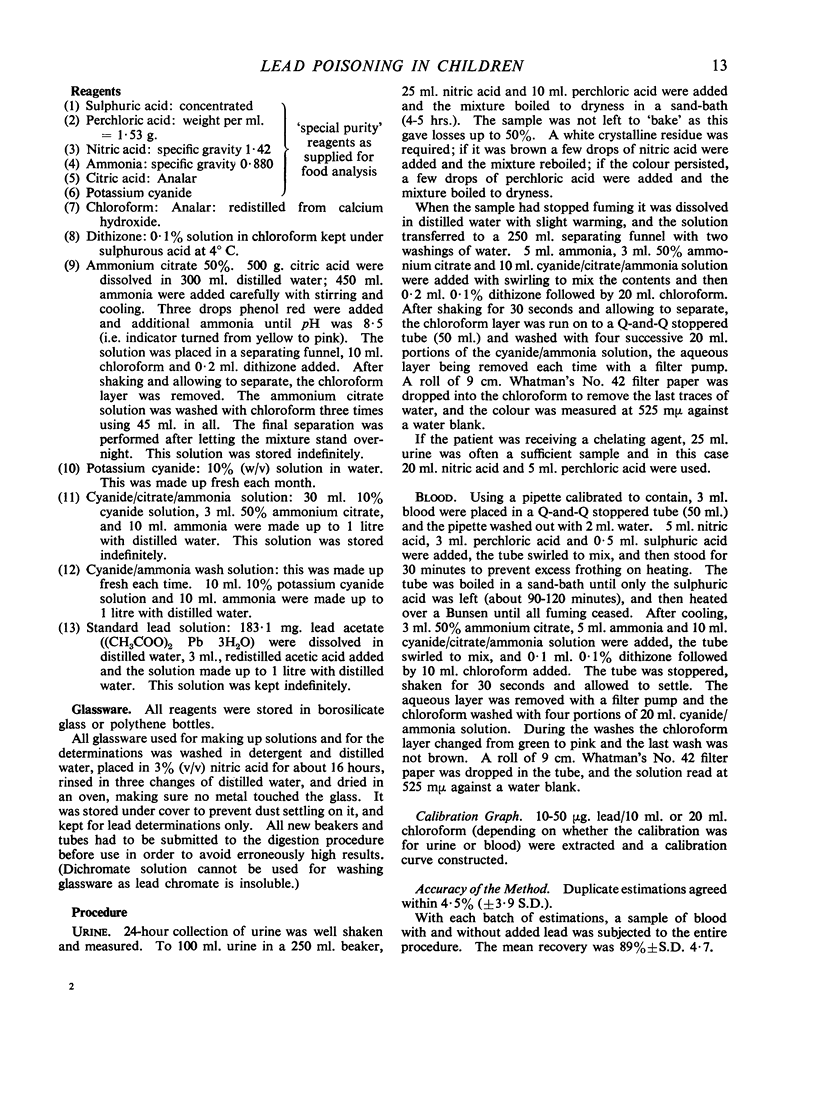
Selected References
These references are in PubMed. This may not be the complete list of references from this article.
- BESSMAN S. P., LAYNE E. C., Jr Distribution of lead in blood as affected by edathamil calcium-disodium. AMA Am J Dis Child. 1955 Mar;89(3):292–294. doi: 10.1001/archpedi.1955.02050110358005. [DOI] [PubMed] [Google Scholar]
- BRADLEY J. E., POWELL A. E., NIERMANN W., MCGRADY K. R., KAPLAN E. The incidence of abnormal blood levels of lead in a metropolitan pediatric clinic; with observation on the value of coproporphyrinuria as a screening test. J Pediatr. 1956 Jul;49(1):1–6. doi: 10.1016/s0022-3476(56)80049-8. [DOI] [PubMed] [Google Scholar]
- BYERS R. K. Lead poisoning; review of the literature and report on 45 cases. Pediatrics. 1959 Mar;23(3):585–603. [PubMed] [Google Scholar]
- BYERS R. K., MALOOF C. Edathamil calcium-disodium (versenate) in treatment of lead poisoning in children. AMA Am J Dis Child. 1954 May;87(5):559–569. doi: 10.1001/archpedi.1954.02050090547004. [DOI] [PubMed] [Google Scholar]
- CHISOLM J. J., Jr, HARRISON H. E. The treatment of acute lead encephalopathy in children. Pediatrics. 1957 Jan;19(1):2–20. [PubMed] [Google Scholar]
- CLARK N. S. Lead poisoning in infancy. Arch Dis Child. 1950 Sep;25(123):297–301. doi: 10.1136/adc.25.123.297. [DOI] [PMC free article] [PubMed] [Google Scholar]
- CLAYTON B. E., PATRICK A. D. Use of dimercaprol or pencillamine in the treatment of cystinosis. Lancet. 1961 Oct 21;2(7208):909–910. [PubMed] [Google Scholar]
- FOREMAN H., FINNEGAN C., LUSHBAUGH C. C. Nephrotoxic hazard from uncontrolled edathamil calcium-disodium therapy. J Am Med Assoc. 1956 Mar 24;160(12):1042–1046. doi: 10.1001/jama.1956.02960470038010. [DOI] [PubMed] [Google Scholar]
- GOLDBERG A., SMITH J. A., LOCHHEAD A. C. Treatment of lead-poisoning with oral penicillamine. Br Med J. 1963 May 11;1(5340):1270–1275. doi: 10.1136/bmj.1.5340.1270. [DOI] [PMC free article] [PubMed] [Google Scholar]
- KEHOE R. A. The metabolism of lead in man in health and disease. I. The normal metabolism of lead. J R Inst Public Health. 1961 Apr;24:81–97. [PubMed] [Google Scholar]
- KENNEDY C. The cerebral metabolic rate in children. Prog Neurobiol. 1956;1:230–238. [PubMed] [Google Scholar]
- MCLAUGHLIN M. C. Lead poisoning in children in New York City, 1950-1954; an epidemiologic study. N Y State J Med. 1956 Dec 1;56(23):3711–3714. [PubMed] [Google Scholar]
- MELLINS R. B., JENKINS C. D. Epidemiological and psychological study of lead poisoning in children. J Am Med Assoc. 1955 May 7;158(1):15–20. doi: 10.1001/jama.1955.02960010017004. [DOI] [PubMed] [Google Scholar]
- MILLICAN F. K., LOURIE R. S., LAYMAN E. M. Emotional factors in the etiology and treatment of lead poisoning; a study of pica in children. AMA J Dis Child. 1956 Feb;91(2):144–149. doi: 10.1001/archpedi.1956.02060020146007. [DOI] [PubMed] [Google Scholar]
- OHLSSON W. T. Penicillamine as lead-chelating substance in man. Br Med J. 1962 May 26;1(5290):1454–1456. doi: 10.1136/bmj.1.5290.1454. [DOI] [PMC free article] [PubMed] [Google Scholar]
- PETERS R. Significance of biochemical lesions in the pyruvate oxidase system. Br Med Bull. 1953;9(2):116–122. doi: 10.1093/oxfordjournals.bmb.a074325. [DOI] [PubMed] [Google Scholar]
- REDDI K. K. Isolation of thorium B (lead)-binding substance from the erythrocytes of rabbit blood. Nature. 1953 Aug 1;172(4370):202–202. doi: 10.1038/172202a0. [DOI] [PubMed] [Google Scholar]
- WALSHE J. M. Penicillamine, a new oral therapy for Wilson's disease. Am J Med. 1956 Oct;21(4):487–495. doi: 10.1016/0002-9343(56)90066-3. [DOI] [PubMed] [Google Scholar]
- WHITE H. H., FOWLER F. D. Chronic lead encephalopathy. A diagnostic consideration in mental retardation. Pediatrics. 1960 Feb;25:309–315. [PubMed] [Google Scholar]


